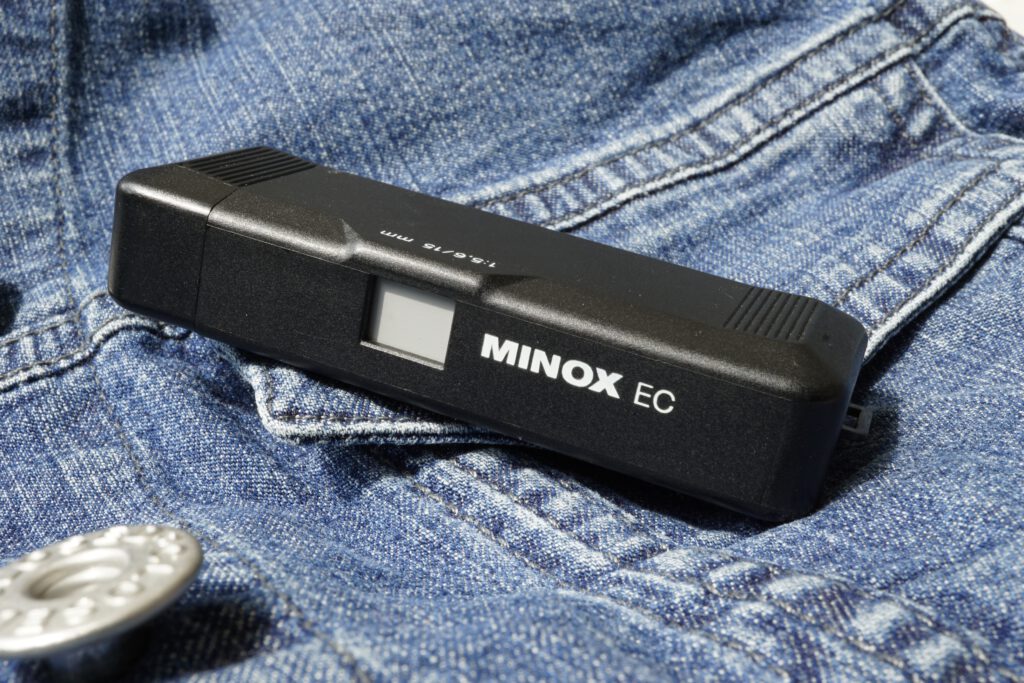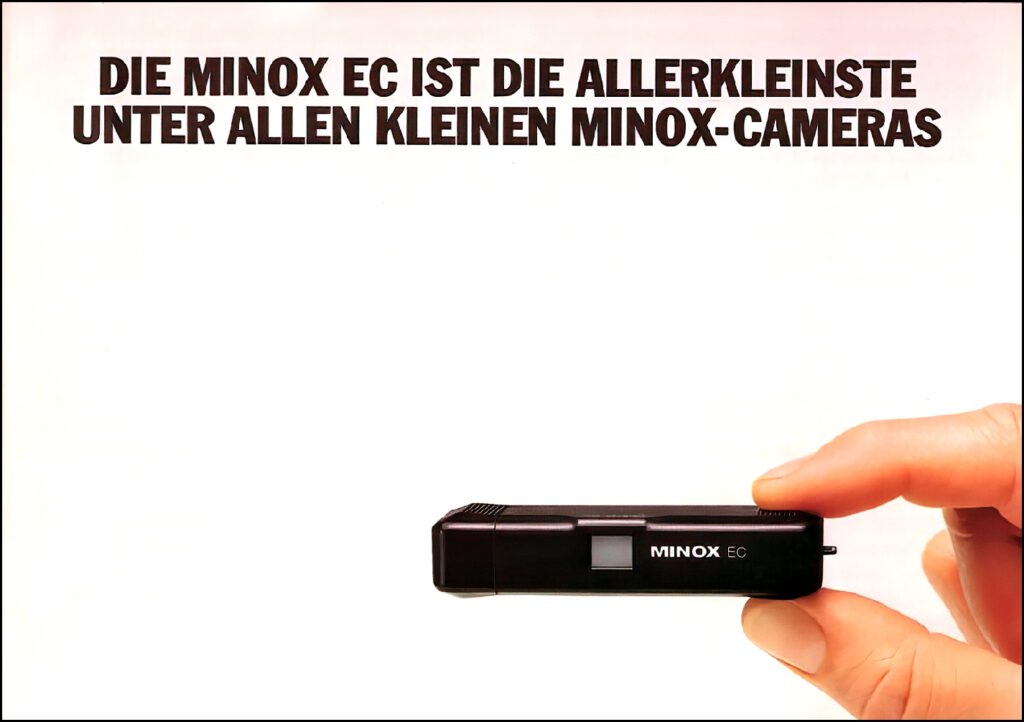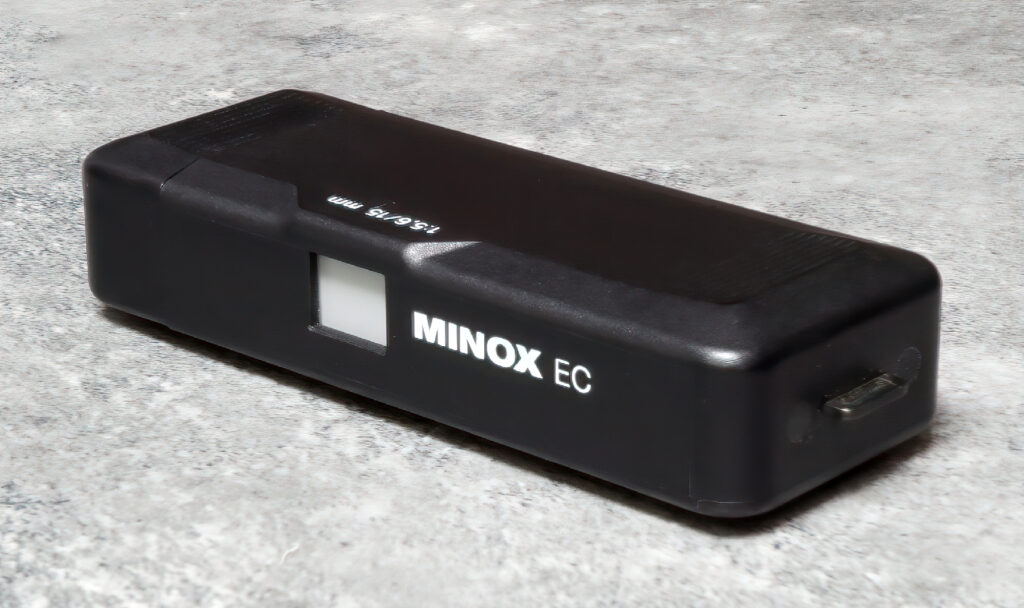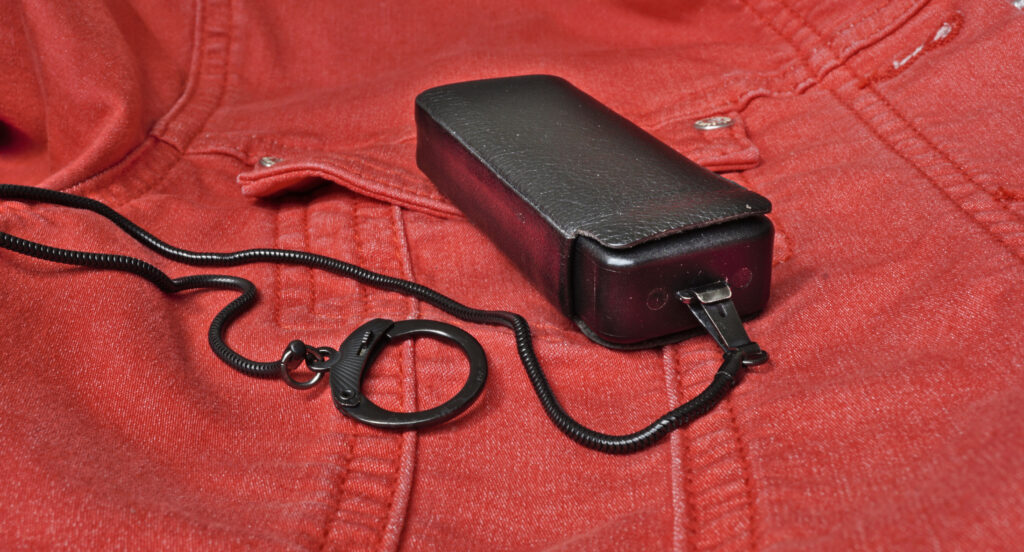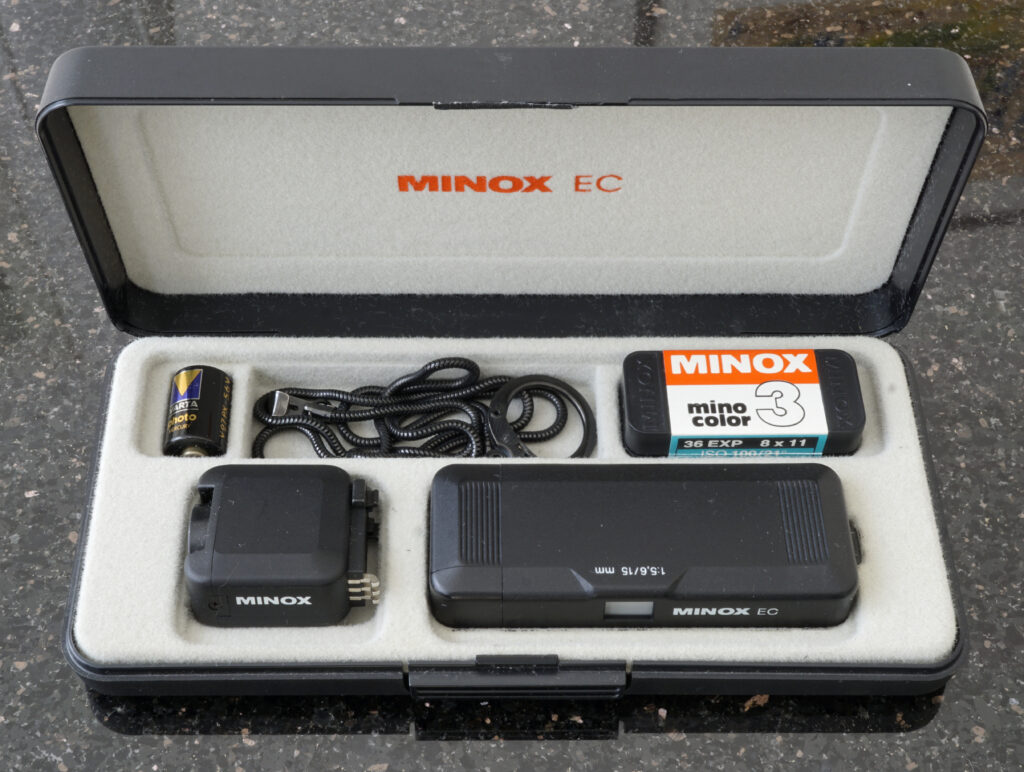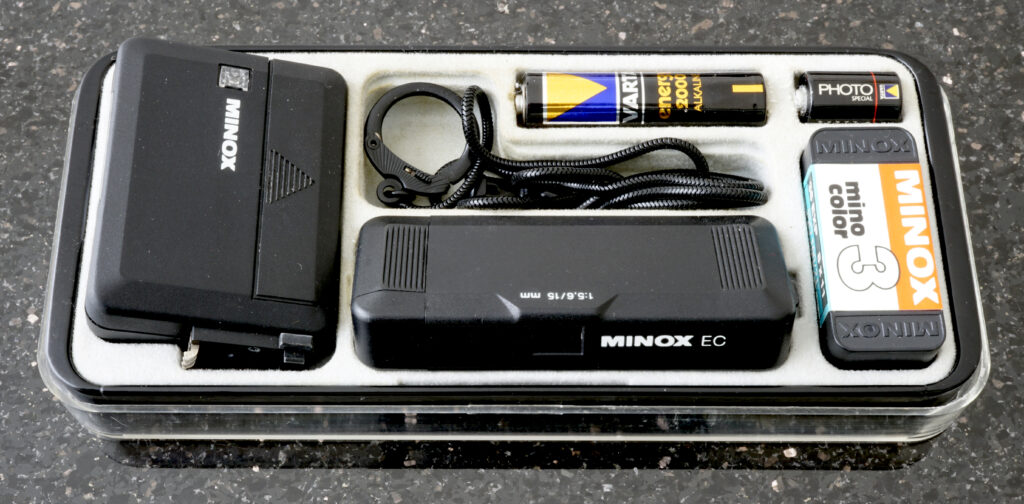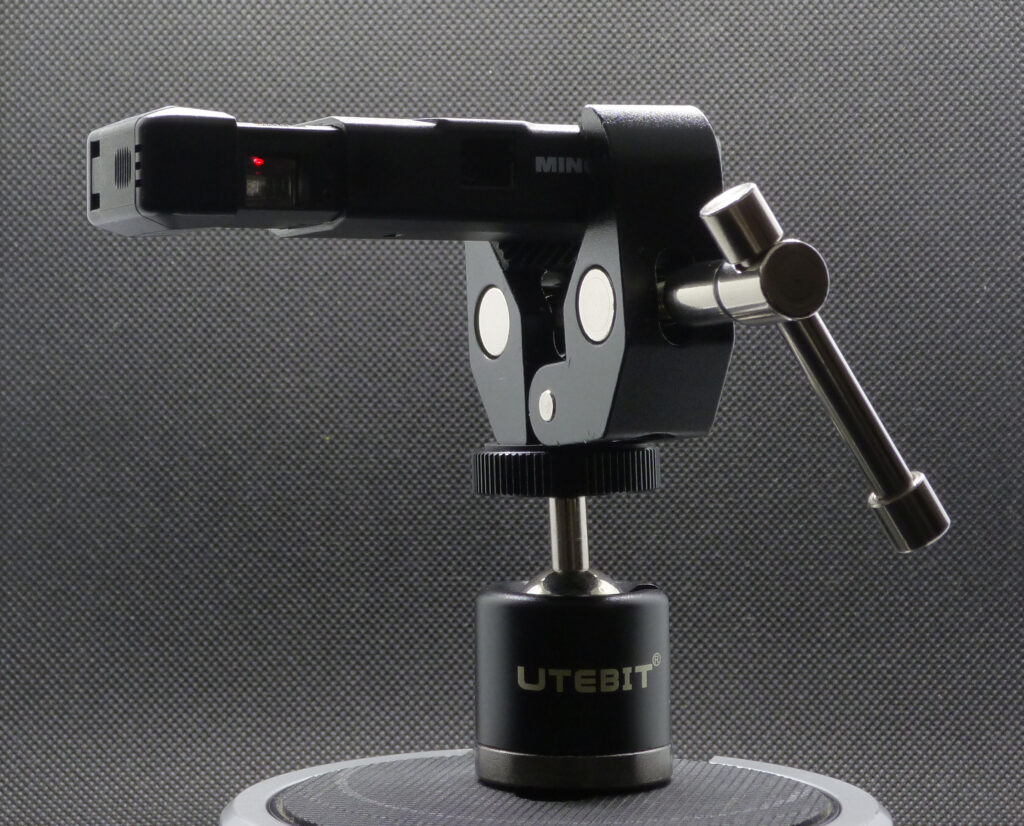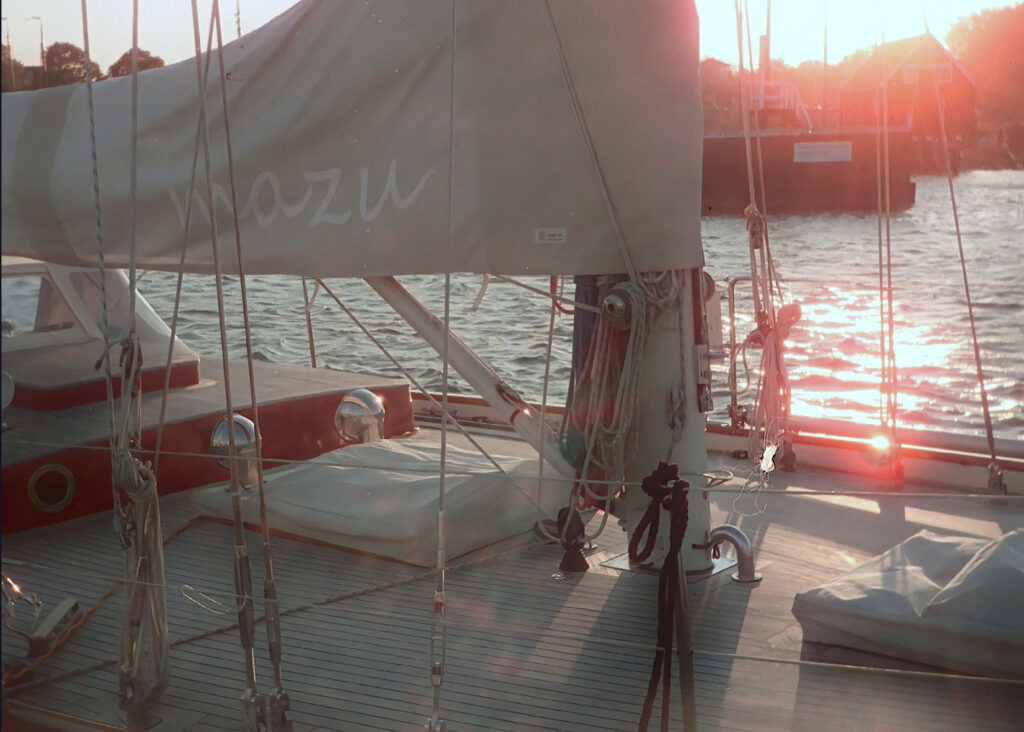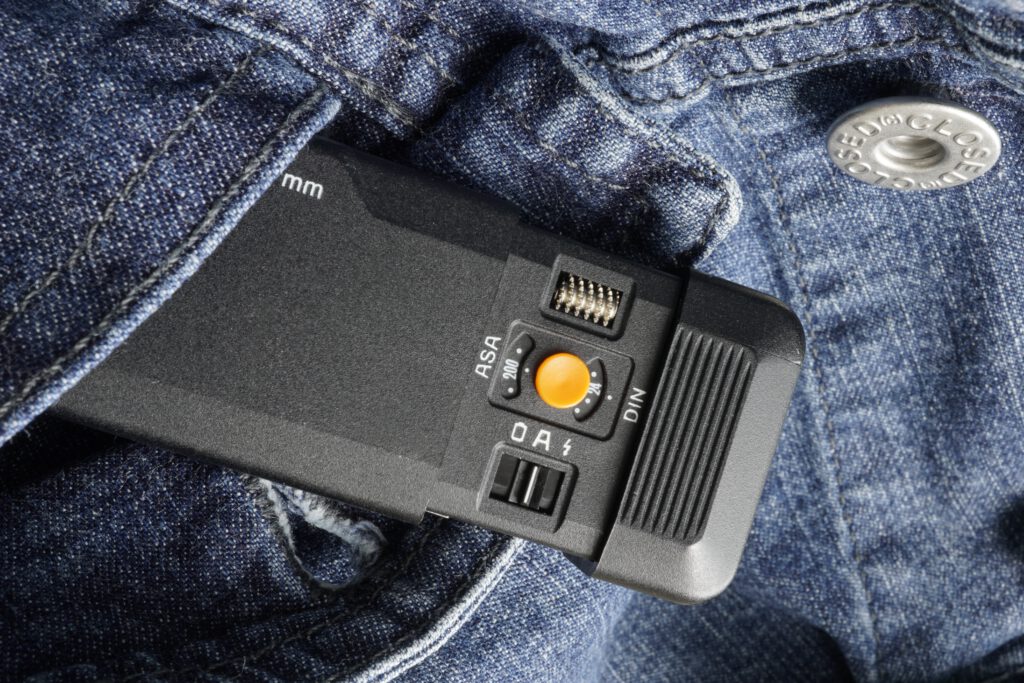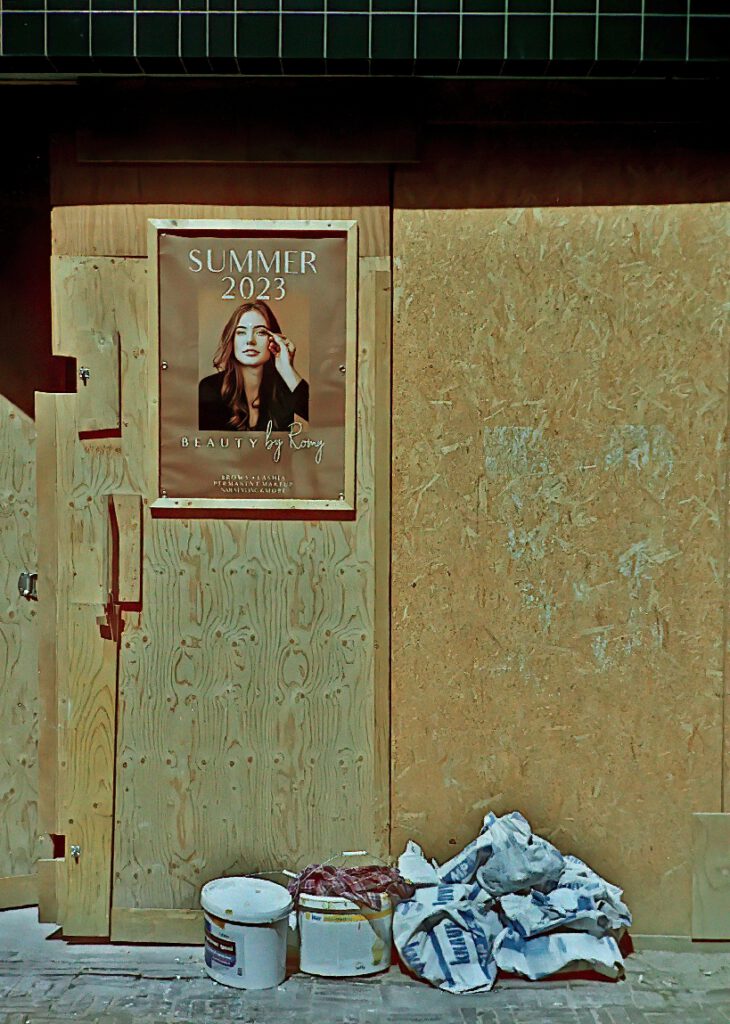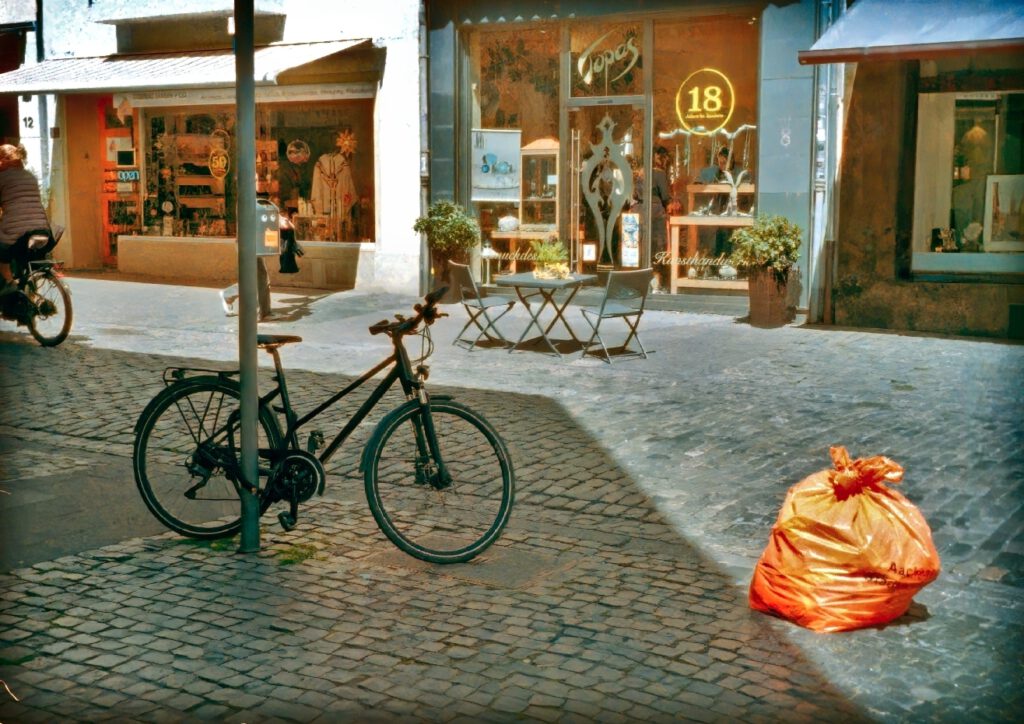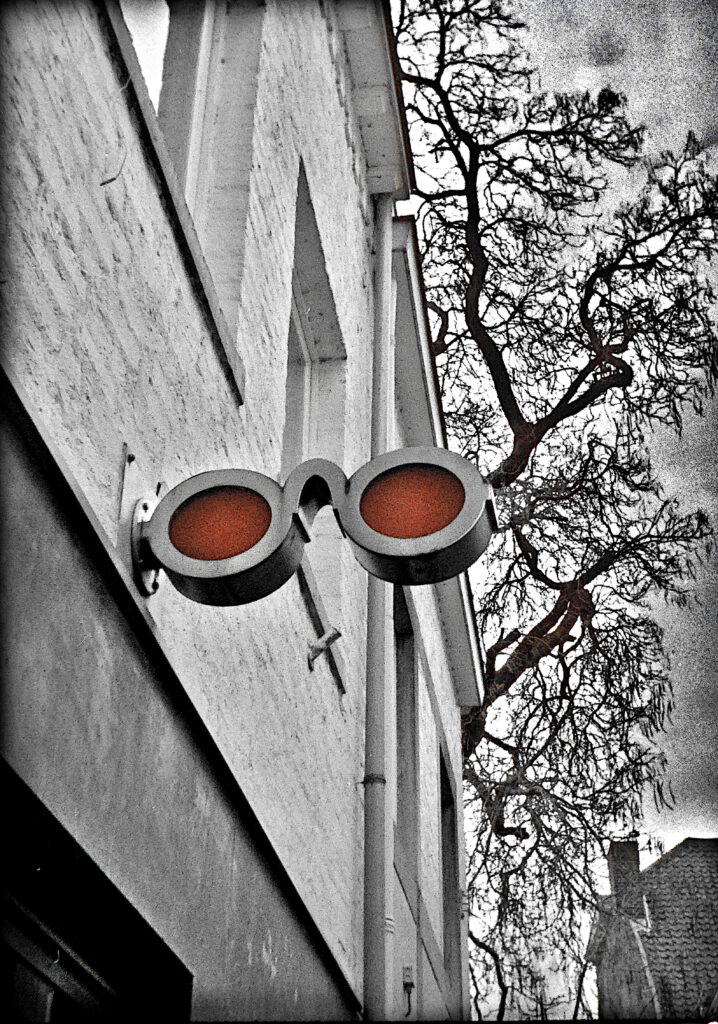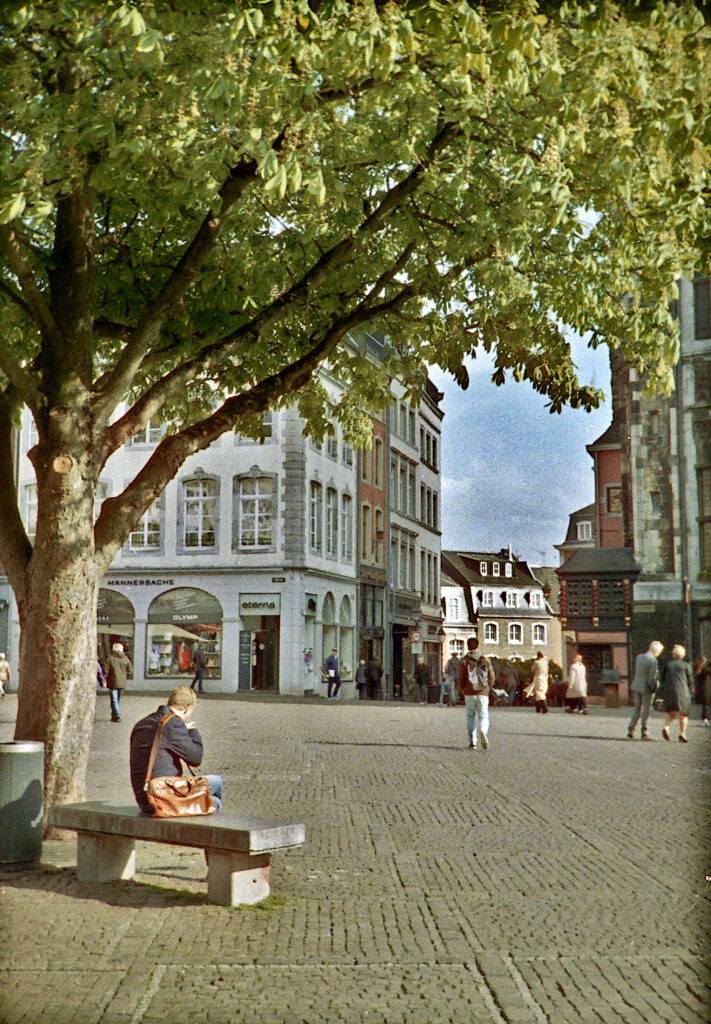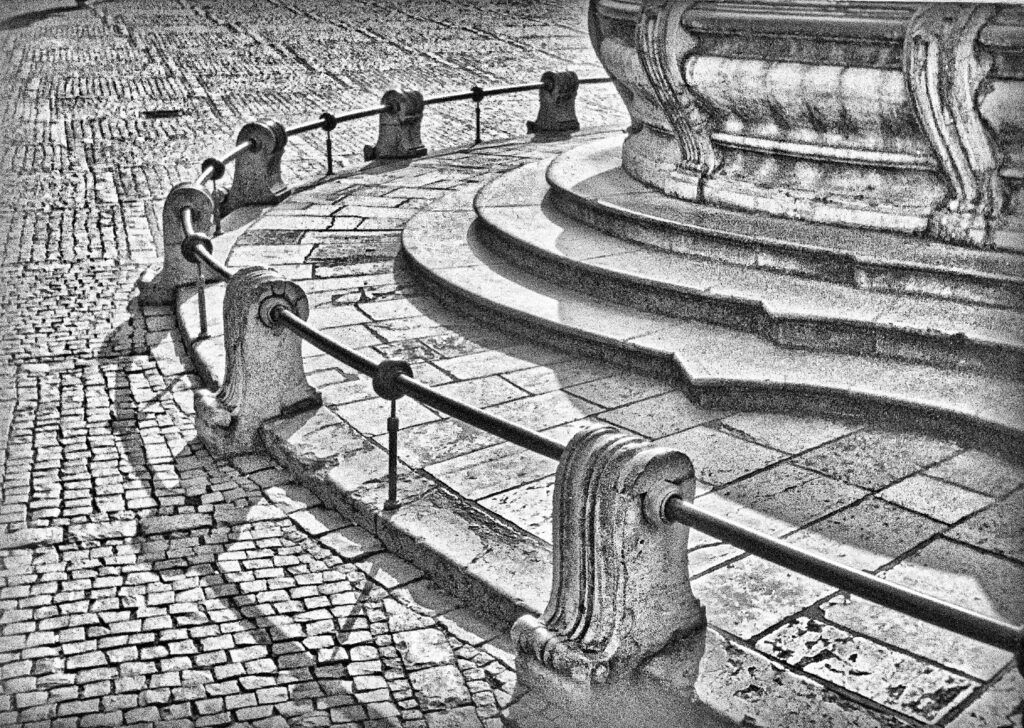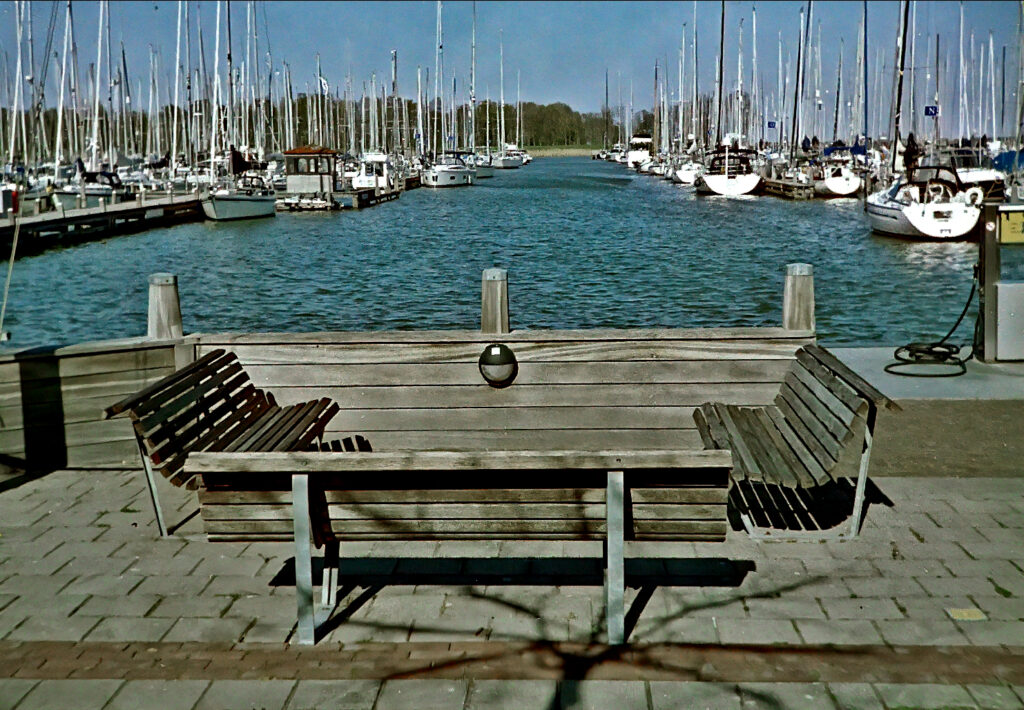The Minox EC is the sneaker version of the classic Minox cameras – casual, lightweight, active. It fits into even the smallest bag and can accompany you everywhere. With its fully automatic mode, it is the perfect companion for point-and-shoot photography.
What is less well known is that the Minox EC was also used for espionage in a form modified by a secret service.
Page Contents
World record in size and weight
The Minox EC is the smallest and lightest mass-produced camera ever manufactured. And it achieves the image quality you have come to expect from Minox.
The Minox company therefore advertised
The Minox EC is the tiniest of the small
Minox cameras
It takes up the same amount of space as the Riga Minox, which is three times heavier.
The Minox A is both larger and heavier than the EC.
| Camera | Dimensions (mm) | Volume (mm³) | Volume % Relative to Riga Minox | Weight (g) | Weight % Relative to Riga Minox |
|---|---|---|---|---|---|
| Riga Minox | 80.8 × 27.9 × 17.7 | 39,888 | 100% | 135 | 100% |
| Minox A | 82.8 × 28.1 × 18.0 | 41,879 | 105% | 69 | 51% |
| Minox EC | 80.0 × 30.0 × 16.7 | 40,080 | 100% | 44 | 33% |
A cool gadget in 1981
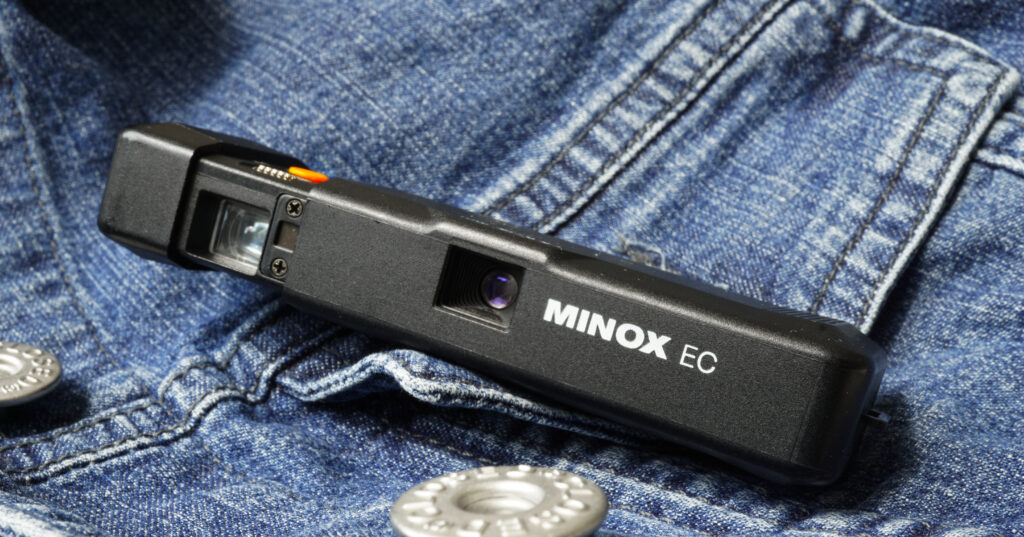
In a world without smartphones, the tiny Minox EC 1981 was an extremely cool photography gadget. It took photos that were every bit as good as those taken with the (much larger) pocket cameras that were popular at the time. However, it was also three times as expensive. But you got top quality in return. When it was introduced in 1981, the EC cost DM 235 in Germany, while the classic Minox LX, which was current at the time, cost DM 669.
The Minox EC is somewhat ridiculed by some collectors and not taken seriously. It is dismissed as a simple plastic camera. This does not do the camera justice at all. In my experience, at medium distances and with sufficient light, it actually takes better pictures than the classic Minox cameras.
The housing material is also by no means simple plastic. Rather, it is glass fiber-reinforced polycarbonate, which is characterized by exceptional impact resistance and rigidity. This makes the Minox EC extremely robust. Scratches and dents, which are common with classic Minox aluminum housings, are practically non-existent with the EC.
Bauhaus Design: Form follows function
The design of the Minox EC embodies many principles associated with the Bauhaus movement:
- Minimalism and functionality: The camera is reduced to the bare essentials and dispenses with unnecessary embellishments. Its form is derived directly from its function.
- Clear geometric shapes: The Minox EC is a smooth black cuboid reminiscent of the simple, geometric designs of the Bauhaus.
- Focus on industrial production and materials: The use of glass-fiber reinforced plastic was a sign of modern industrial manufacturing in the 1980s, which corresponds to the Bauhaus ideal of combining art and technology.
- The Minox EC also embodies the design principles of the Riga Minox, which was developed in the 1930s and was considered an outstanding example of minimalist, functionalist design in its day, even though it did not originate directly from the Bauhaus school.
Minox EC technical data
| Specification | Details |
|---|---|
| Dimensions (Closed) | 80.0 × 30.0 × 16.7 mm1 |
| Dimensions (Open) | 96.3 × 30.0 × 16.7 mm1 |
| Weight | 44 g (56 g with battery and film)1 |
| Body Material | Macrolon (glass fiber-reinforced polycarbonate) |
| Film | 8×11 mm Minox cartridge |
| Frame Counter | Counts down from 36 or 15 to 0 |
| Lens | Fixed-focus Minox 15 mm f/5.6, 4-element glass lens |
| Focus Range | 1 meter to infinity (fixed focus at 2.5 m) |
| Shutter | Electronically controlled leaf shutter |
| Shutter Speeds | 8 s (25 ASA) to 1/500 s, long exposure warning LED at 1/30 s |
| Exposure Control | Fully automatic, CdS photocell-based. EV 4 to 14 |
| Film Advance | Manual, push-pull mechanism |
| Viewfinder | Optical viewfinder with bright frame |
| Battery | 5.6 V PX27 battery, battery check via LED |
| Flash Compatibility | Minox 8×11 Electronic flash, Flash cube adapter FE-4 |
| Flash Sync Speed | 1/30s |
| Film Sensitivity Range | ISO 25 to 400 |
| Special Editions | Exclusive Set with 8×11 Electronic flash |
| Years of Manufacture | 1981–2003, 154,000 units |
1 Own measurements.
Minox EC sets and accessories
Of course, there weren’t as many accessories available for the Minox EC as there were for the classic Minox. This was due to the concept of an uncomplicated point-and-shoot camera. Perhaps it was also believed that EC buyers had a smaller budget. Nevertheless, there were a few practical items that could be purchased to go with the EC.
Camera with push-in case and chain
There is a beautifully crafted leather case made of very thin, soft calfskin. When it was introduced in 1981, it cost 12 DM in Germany. It is open at the bottom. This protects the camera on all sides except the bottom, which is protected from scratches by an integrated eyelet anyway. When you want to take a photo, simply pull the camera out by the chain and you are ready to shoot. Very practical.
The leather case is quite rare today, so it was apparently not sold very often. Since the camera body is extremely robust and resistant to scratches anyway, most users probably did without it.
The carrying chain is modeled after the Minox LX measuring chain. It is black, but unlike the measuring chains, it has no markings for distance measurement. This is not necessary, as the EC has a fixed focus lens. I find the chain very useful, as it keeps the small camera securely in place even during sporting activities.
Camera with Flash cube adapter FE-4
At the time, the flash cube adapter was an inexpensive alternative to electronic flash. So there was a set available for those who wanted to use flash with the EC. When it was introduced in 1981, it cost DM 255 in Germany.
Since the camera could not have a standard hot shoe due to its size, this adapter was necessary. It was a good solution at the time, but is no longer of interest today. This set is definitely only for collectors.
Exclusive-Set with 8×11 Electronic flash
Then as now, a useful and sustainable accessory: the electronic flash. This set was a great thing which cost when it was introduced in 1991 DM 655 in Germany.
But in return, you get a tiny flash that perfectly matches the EC in terms of design. It is still very useful today. With a standard AA battery, it can flash 200 times. It works exclusively in manual mode. An automatic mode was simply not possible at that time with this size.
The flash has a guide number of 12. With a 400 ASA film, it has a range of 3.5 to 7 m (11.5 to 23 feet).
Combi case
Anyone who had already spent the money on the exclusive electronic flash could also afford the Combi-Case leather case. This is certainly the ultimate case for Minox EC and electronic flash. When it was introduced in 1990, it cost DM 39 in Germany.
Apparently, however, it was rarely sold, as it is the rarest Minox leather case of all models. I saw it only once on offer and bought it immediately. Now I am one of the few very proud owners. Regardless of it’s collector’s value, I actually consider it to be a very practical item for traveling.
Tripod
Due to its size and point-and-shoot philosophy, the Minox EC does not have a tripod connection. However, if you still want to take long exposures, you can use the following solution.
Any tripod clamp with 1/4“ and 3/8” threads securely attaches the Minox EC to any tripod without damaging the camera. A simple and inexpensive solution. Although you still cannot connect a cable release, the camera is so securely clamped that you don’t need one.
Unlike the classic Minox, the EC does not have a “T” setting for long exposures. This means that the longest exposure time for 100 ASA film is limited to 2 seconds. However, you can simulate the T function and thus achieve exposure times of any length. To do this, remove the battery before taking the picture. Without the battery, the camera opens the shutter when the shutter release button is pressed. It then remains open until the camera is pushed together again. When you no longer need T mode, reinsert the battery.
Taking pictures with a Minox EC
The Minox EC can take excellent photos because it has the same lens built in as the classic Minox C and LX. This is the famous “Minox” lens, the successor to the “Complan” lens used in the Minox A and B.
The difference between the EC and other Minox models is that the Minox lens in the EC has a fixed aperture of 5.6 instead of 3.5. This makes it slightly less light-sensitive, but it has a greater depth of field.
While f3.5 in 8×11 mm format corresponds to an aperture of 11 in 35mm format or full frame, f5.6 corresponds to an aperture of 17. This results in a focus range of 1 m to infinity. So they had to stop down the Minox EC a little, as it does not have a distance setting. At the same time, slightly stopping down the aperture usually leads to better image quality in lenses, although the Minox lens already offers excellent image quality at 3.5.
Like the Minox C and LX, the EC also has a low light warning LED. And it is better implemented in the EC because the LED is visible in the viewfinder and does not need to be switched on manually. You simply look through the viewfinder and see a red light when the exposure time is longer than 1/30 s. Much better!
Preparations
Before you start taking pictures with your Minox EC, you should check it first. I have written an article about this, see here. If you encounter a problem, you can read here how to repair the Minox EC.
If you have never taken photos with a Minox before, you should read the instructions for beginners here.
Considerations for optimal photos
The Minox EC has two disadvantages compared to the classic Minox: the slower lens of f5.6 and the fixed distance of 2.5 m (8 feet).
Film speed
The first disadvantage can easily be compensated with a fast film. I would recommend Kodak Ektar 100 or Portra 400. The graininess of the 400 ASA film is not a problem, especially with digital post-processing. If you don’t want to expose for longer than 1/30 s (handheld), you can still take pictures indoors with daylight (EV 8). The upper limit of 1/500 s is reached when the sky is cloudy (EV 12).
This advice applies when you want to take photos indoors or in low light conditions. On sunny days, I would use a 100 ASA film, such as Kodak Ektar 100. If you don’t want to expose for longer than 1/30 s (handheld), you can then still take photos in heavily overcast conditions or in very bright rooms (EV 10). The upper limit of 1/500 s is reached on a sunny day (EV 14). Some of the images shown below were even taken outdoors in summer even with 50 ASA film (CineStill 50d) and are therefore particularly fine-grained.
Set the film speed using the milled wheel next to the shutter release button.
Fixed focus
The problem of the fixed-focus lens is worth thinking about a little more carefully.
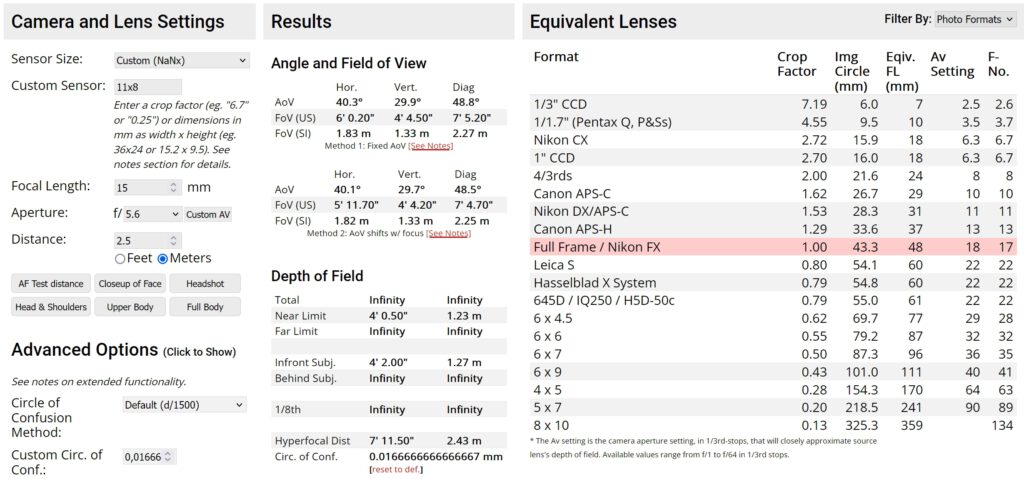
Source: pointsinfocus.com
Minox specifies a depth of field range of 1 m (3 1/2 feet) to infinity in the user manual. The lens is fixed at 2.5 m (8 feet). So if you prefer to choose subjects at this distance, the photos will be optimally sharp. You can then expect quality as good as or better than a classic Minox. For a deeper understanding of Minox depth of field, I recommend reading my article on the subject.
The table I created there for the classic Minox lens can be found here adapted to the Minox EC lens, see table on the right.
In short, use fast film and stick to subjects between 2 and 5 m (6 and 16 ft) away for best sharpness.
The following photo shows an example of this. The photo was taken handheld. It is intended to illustrate the achievable depth of field and sharpness of the Minox EC photograph.
The wooden pillar on the left was about 1 m away, and the beam at the top right extends several meters away from the camera. The building opposite is at least 20 m (65 feet) away and can therefore be classified as infinite. This is the sharpness achievable with this camera (motion blur neglected).
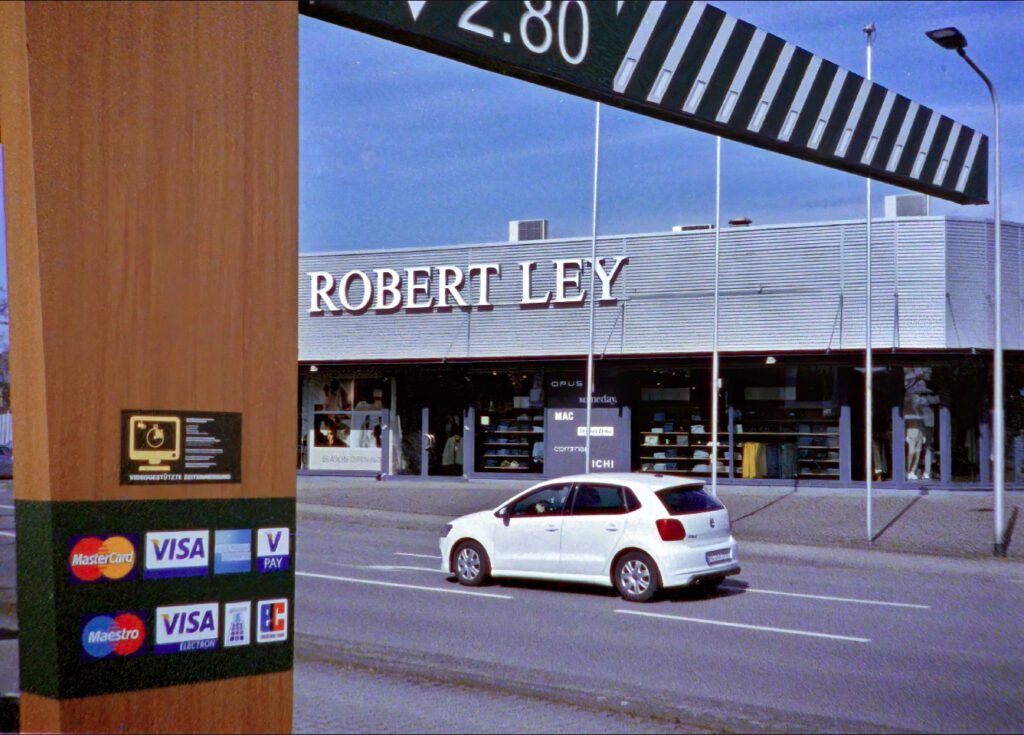
If you use a fine-grain film such as CineStill 50d with 50 ASA, the details will be even sharper, as shown in the sample photos below.
Tips for use
- Use four LR43 button cells as disposable battery, see here.
- The camera consumes power when ready for use, so push the camera closed when not in use
- Please take this seriously: always remove the disposable battery from the camera if you are not going to use it for a few weeks. In 80% of cases, a leaking battery is the cause of a defective Minox EC. This is definitely a weak point of this camera.
Operating the Minox EC
I deliberately chose not to repeat in this article what is already written in the instruction manual. However, I think a video on how to use the camera would be very useful. Fortunately, Mostly Vintage Cameras has created an excellent video on this topic. It also shows how to use the electronic flash from the Exclusive Set:
Sample photos
Click to enlarge. Then use the fullscreen button at the top right to see the image in 100% magnification.
